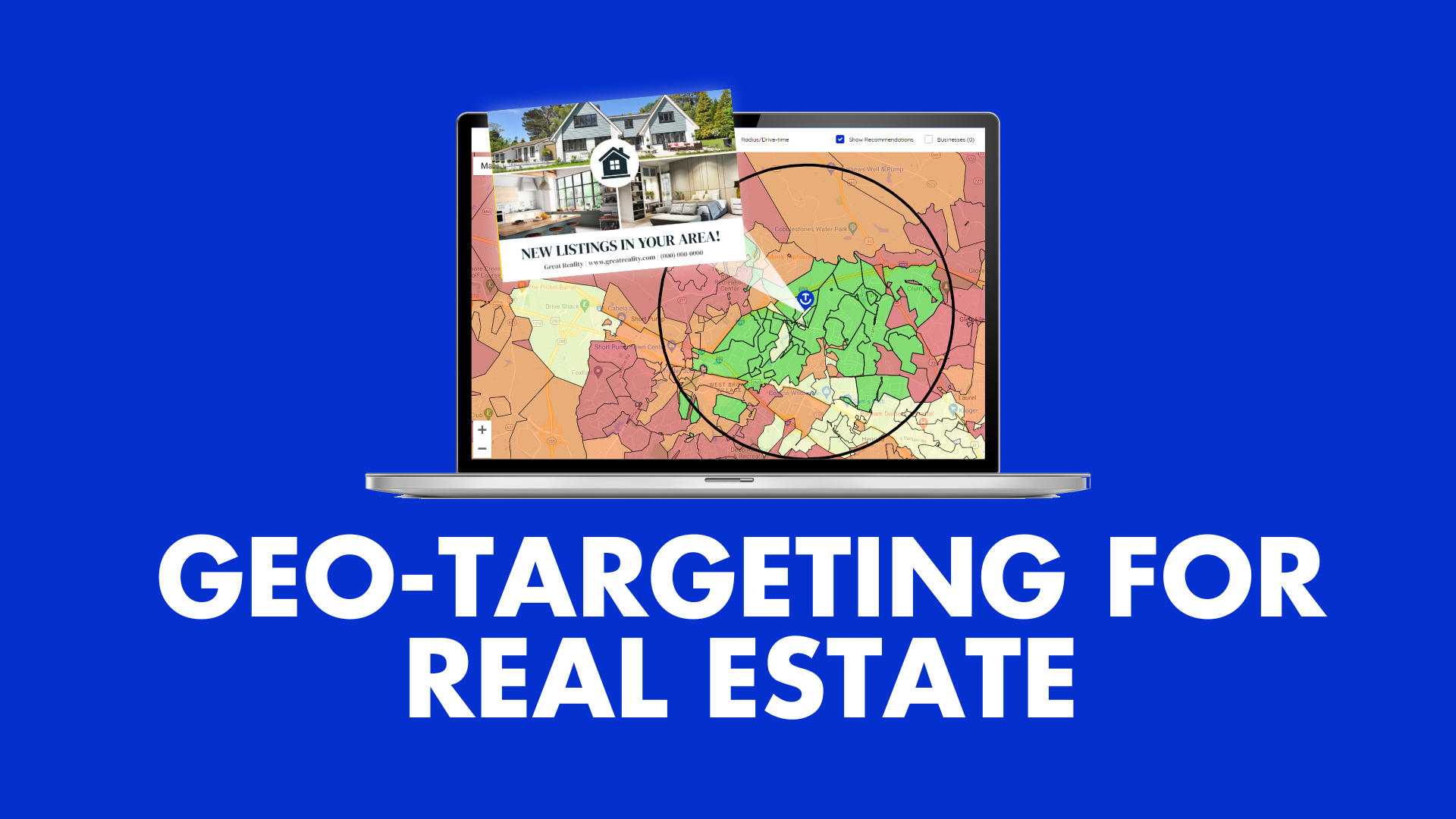Neighborhood Targeting & Geo-Marketing Trends in Real Estate
It's essential to understand the concept of geo-marketing, targeting audiences by location, to boost relevance. Doing this enables you to set clear focus areas for real estate teams.
There are several ways to get the data you need for this, including collecting it yourself after a local market analysis or sourcing it from databases. However, you will need to secure the data and keep it private, in compliance with your state's privacy laws.
What Is the Difference Between Geo-Fencing and Geo-Marketing?
Geo-marketing is the general umbrella term for using location data for audience targeting. Many online platforms now allow you to shape your geo-targeted advertising in many ways.
However, be aware that on some platforms, such as Google Ads and Facebook, some of these advertising options are restricted due to internal policies. Google Ads, for example, does not allow you to use ZIP codes, and Meta requires a minimum 15-mile radius for targeting.
Some of the options you might see when focusing your efforts on Taradel include using categories such as:
- ZIP code or address
- Heat map
- Drive time from a location
- Radius
- Geo-fence
Geo-marketing techniques are becoming increasingly complex. However, with Taradel's direct mail and digital ad tools, you can expect the whole process to be as simple as possible.
Geo-fencing allows you to draw a virtual map boundary. Crossing it can trigger a push notification or in-app message when a device enters or exits a boundary. For example, it could trigger a message when shoppers are near a particular store, or when someone has recently engaged with a brand in other ways.
They can also target community events, potentially informing attendees of specific offers or what to expect.
These days, real estate marketing trends include neighborhood targeting, geo-targeting a listing's local community for local mail advertising.
You can often target such ads in Google Ads if the recipient does not have a compatible app on their phone. However, if people are using your app, you can use that to focus your messaging more directly.
What Is Geo-Targeting in Marketing?
Geo-targeting is the process of selecting an audience based on their geography, one of the steps in the broader geo-marketing effort. You can reach people who:
- Are currently in an area
- Are regularly in an area
- Have shown interest in an area based on their digital presence
It allows you not only to determine whether someone has physically been in an area, but also whether they have a digital presence or interest in the area, based on having searched or visited the location. As such, it helps you avoid wasted spend outside your market if you only want to target residents or shoppers, for example.
If you know someone has visited a location but your records show they do not live there, you may be able to get them to follow up again with a digital message or advertisement featuring a key offer. The fact that they have already been there means you understand they have built memories of the area and are more comfortable visiting again.
Is Neighborhood Targeting for Real Estate Geo-Marketing or Geo-Targeting?
This process is typically "geo-targeting". While it sits under the "geo-marketing" banner, it is much more of a tactical selection of a specific area for marketing delivery.
Frequently Asked Questions
How Big Is the Geomarketing Market Today and Why It Matters
Current estimates of the size of the geomarketing market exceed $30 billion. The rapid growth in this area is further boosted by technology and market acceptance, as well as by much more robust micro-targeting enabled by AI analysis.
The rapid growth comes with more tools and a larger data inventory, but also much more noise. As such, being disciplined with your marketing and focusing your targeting may help you protect your budget and make it more effective than ever.
Is Geo-targeting Effective for Small Budgets in Real Estate?
If you start by using a real estate postcard campaign with only a few extremely high-match routes, plus a tight radius around a listing and key investor areas, you can send messages with a greater chance of success. However, if you are using digital marketing, try to target only those you can be assured have had a presence in that area.
Also, focus on only a couple of offers at once, such as a home valuation or an open house. You can then rotate these as interest moves on.
How Does Geomarketing Work across Mail and Digital
While mail reaches every home in an area or on a USPS route, a digital marketing effort follows its recipients wherever they are, and can do so with messaging that matches the physical mail they receive for saturation and regular reminders.
You can use UTM parameters in QR codes so that when people visit your homepage, you will receive information on which UTM parameters are more likely to trigger engagement. It may be that people are most likely to do so after receiving a digital message and then a mail advertisement, for example, rather than a mail effort on its own.
Get Your Geo-Marketing Plan Into Action
Get started by picking a few key neighborhoods and mailing information about a local listing to them. Use USPS route-level mailings, then retarget the most likely buyers in those areas with matching social media and Google ads to ensure visibility.
If you're not sure how to do this, Taradel offers tools that let you select routes based on demographics or other criteria.
With a free ad design with a direct mail purchase for combined Facebook and digital campaigns, we take all the hard work off your hands. So, contact Taradel today to find out exactly what we can do for you moving forward.



